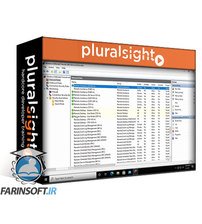در حال حاضر محصولی در سبد خرید شما وجود ندارد.

This course will teach you the fundamentals and key concepts around the threats, attacks, and vulnerabilities your organization is likely to face. More importantly you’re learn how to mitigate those risks and protect your organization.
در این روش نیاز به افزودن محصول به سبد خرید و تکمیل اطلاعات نیست و شما پس از وارد کردن ایمیل خود و طی کردن مراحل پرداخت لینک های دریافت محصولات را در ایمیل خود دریافت خواهید کرد.


Risk Management for CompTIA Security+

Introduction to Threat Intelligence (C|TIA Prep)

کورس یادگیری کامل Threats, Attacks, and Vulnerabilities for CompTIA Security+

Governance, Risk, and Compliance for CompTIA Security+

Architecture and Design for CompTIA Security+

Architecture and Design for CompTIA Security+

CompTIA Security+: Exam Briefing

فیلم یادگیری کامل Operations and Incident Response for CompTIA Security

Security Management: A Case Study

Implementation of Secure Solutions for CompTIA Security+